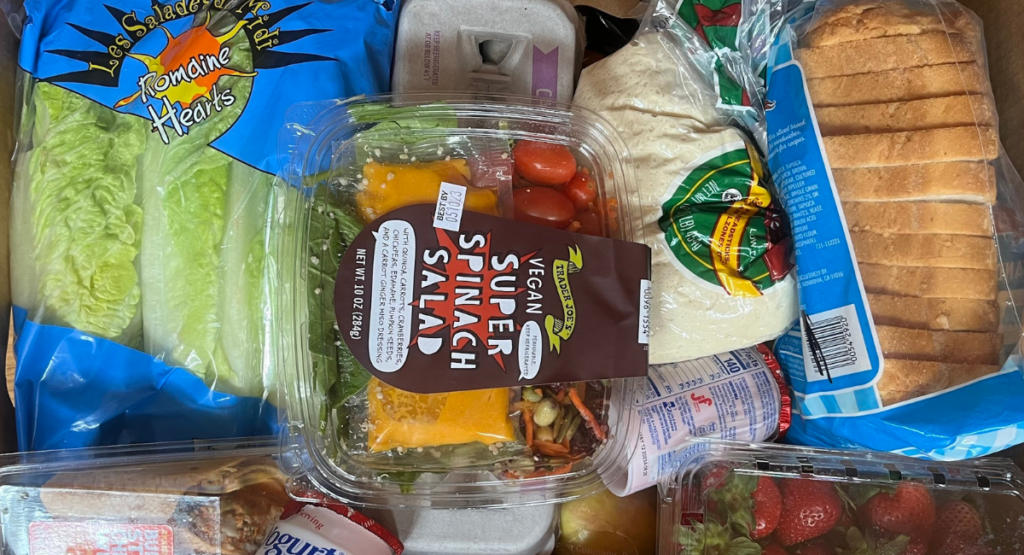
There is no true “Expiration Date”
Save Money and Reduce Waste by Understanding Dates on Food!
Did you know there is no uniform language for food labels?
That’s right! Did you know there is no uniform language for food labels? It’s been all over the news lately, from the New York Times to The Atlantic, so we wanted to reshare our article from last year as a reminder of one easy way you can reduce food waste at home.
What are food labels?
While these are some of the commonly used phrases, none of these labels are an actual indication of safety or quality! Product dating is not required by Federal regulations, except for infant formula. (USDA)
- “Sell-by” – is used for inventory management and product turnover.
- “Best if Used” – an estimation of the best flavor or quality based on the projected length of time and temperature products might be kept during transport and in the store.
- “Freeze by” – a suggestion of when you should freeze a product to maintain peak quality based on the same principles of “best by” date.
Why it matters!
“Every year, billions of pounds of good food go to waste in the U.S. because home cooks are not sure of the quality or safety of items. USDA estimates that 21% of the available food in the U.S. goes uneaten at the consumer level. In total, 36 pounds of food per person is wasted each month at the retail and consumer levels!” Consumer food waste is often caused by confusion around product dating and the assumption of food safety.
Our Solution
Second Chance Foods receives a lot of food donations from grocery stores that are items nearing expiration. That’s why meat, bread, and yogurt frequently appear in our kitchen. To ensure these items reach our recipients in the condition, volunteers cook these items into some of our favorite recipes. Meat, poultry, and seafood are beneficial additions to our stir-fries, soups, bakes, and more. Sometimes these ingredients become the star, like our salmon cakes, steak fajitas, or glazed meatballs. The kitchen loves to make strata with large donations of bread approaching the end of its peak. Strata is very adaptable, so we can also include a variety of vegetables and herbs from what we have on hand. Yogurt can be a more complex item to utilize, but if it’s plain, we can add it to meatloaf, meatballs, soups, or curries. One of our volunteers, Anya, even brought some to our Dunbar Heights site along with fruit to make smoothies with the kids! Yogurt is also an item we’re happy to pass along in our distribution boxes for families. Even with a close expiration date, we know it’ll be eaten immediately and still be fresh (see Martha’s video below to see just how long yogurt sometimes lasts beyond its label).









What You Can Do At Home
It’s up to you, the consumer, to judge the quality of the food you purchase and consume. It’s okay to look, smell, and even taste! Feeling unsure? Try the USDA Foodkeeper App to help you with storage timelines, cooking tips, and even create calendar notifications for items you have on hand so you use them before they spoil.
A Challenge from our Executive Director!
The next time you’re in the grocery store, look at a packaged dairy item (yogurt, ricotta, sour cream, etc.). Look through the dates on the packages- many will be months away from their “best” or “use” by dates, and often you’ll see dates very close to each other. March 12th on one and March 15th on another. Do you think they could accurately predict the quality or safety of yogurt to the exact day? What about within the right week or month?
The next time you’re about to throw something out – challenge yourself to look, smell, and if it feels safe- taste a small amount. You may be surprised at how much you can reduce your food waste at home.
Some of our favorite long lasting foods:

Honey
“Bees are magical!” and Honey is indefinitely shelf stable due to its acidity, lack of water, and the presence of hydrogen peroxide (Learn More).

Fermented Dairy
Products like yogurt and sour cream can often last 2-4 weeks beyond their “Best-by” date if stored properly with the exception of yogurts with fruit which may spoil faster (Read More).

Eggs
Eggs can last nearly 70 days in total if refrigerated, which can be 3-4 weeks beyond the date on the carton. Learn how to test and check freshness here.

Bread/Bagels
Packaged bread and bagels will often last a week beyond their printed date. Extend it six months further by freezing or make stale bread into delicious bread pudding, french toast, croutons, and so much more!